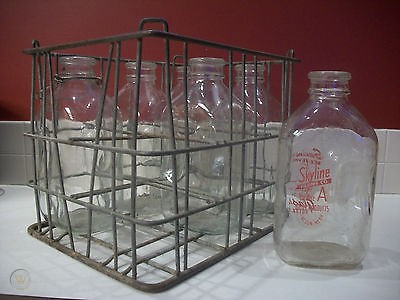Kill The Man With The Ball
Kill The Man With The Ball
 During my seventh and eighth grade years at St. Mark’s Grade School, one of the games that the boys played during recess was “Kill the man with the ball.” The object of the game was to steal the ball from the person who had it, and then hold on to it as long as possible. The boy who had the ball was chased around the playground until someone was able to wrestle the ball from him. Sometimes there was a pileup of boys that occurred while they tried to push their way through to the ball. Whoever got the ball was then chased until someone else pried it out of his hands.
During my seventh and eighth grade years at St. Mark’s Grade School, one of the games that the boys played during recess was “Kill the man with the ball.” The object of the game was to steal the ball from the person who had it, and then hold on to it as long as possible. The boy who had the ball was chased around the playground until someone was able to wrestle the ball from him. Sometimes there was a pileup of boys that occurred while they tried to push their way through to the ball. Whoever got the ball was then chased until someone else pried it out of his hands.
In the middle of the playground, up against the school, there was a cutout in the pavement with stairs that provided access to the basement of the building. The cutout was about eight feet wide and had at least a dozen concrete stairs that led from the playground pavement down to some basement doors. There were concrete walls on each side of the area that was below the ground, and there was an iron railing on each side that was anchored to the pavement, so students who were on the playground would not accidentally fall into the area that led into the basement.
Every so often, the ball would break loose and bounce down the stairs, which would result in a handful of boys running down the stairs to grab the ball. Every time that happened, several of the boys who had been in the pack that was chasing the boy with the ball would run over to the railings on each side and would start spitting at the boys who were running down the stairs to get the ball. The name we used for the area that led to the basement was “the spit pit.” Believe it or not, there were times when one or more boys were dumb enough to think they could retrieve the ball without any of the wads of spit that came out of the mouths of their classmates landing on their heads.
Whenever a boy got caught spitting on a classmate, he had to sit on a chair against a wall in the principal’s office and spit into a coffee cup until it was half full. He was not allowed to chew gum while he was attempting to generate saliva to spit in the cup. I remember sitting in one of those chairs with my classmate, John Ludolph, who was sitting in a chair that was next to my chair. I don’t remember exactly how long it took for us to generate enough spit to get the cup half full, but I know that it was over an hour. We had to resort to keeping our mouths closed while we moved our tongue and cheeks back and forth to generate enough saliva to spit.
It was actually a very effective punishment. We quickly learned that we had to always maintain an awareness of where all the playground supervisors were and whether they had a clear view of the spit pit. When they were not around, everything returned to normal and the boys would line up at the railing, like pigeons on a roof, so they could spit on the guys who were stupid enough to run down the stairs after the ball.
Eventually, even the dummies learned their lesson and the game came to an end every time the ball bounced down the stairs. When that happened, after recess ended, the last guy on the playground would retrieve the ball before going inside.
There were other games the boys engaged in on the playground that would never be permitted today. We were allowed to be aggressive toward each other, as long as no one got injured. While the boys usually played contact sports, the girls hung out in groups and visited with each other or played friendly games that did not involve physical contact.
I think that our principal and teachers believed that a certain level of physical contact between the boys was beneficial because it helped them burn off their energy and aggression, while providing them with a sense of accomplishment. It also helped prepare them for the competition they would encounter later in Life — in high school, the working world, and the other challenges they would be faced with.
While I had some issues with the way I was treated by a few of the religious sisters, all the sisters and teachers at St. Mark’s were devout Catholics who took their job seriously and made certain that their students received a good, Catholic, well-rounded education. They also had a clear understanding of the differences between boys and girls and treated them accordingly.
When I graduated from grade school, almost all my classmates continued their education at one of the Catholic high schools in Peoria, which were Bergan and Academy of Our Lady/Spalding Institute. A handful of students ended up going to one of the public high schools. I was one of those students.
After I graduated from grade school, I made the conscious decision that I was going to get off to a good start at a school where none of my classmates or teachers knew who I was. I had a reputation in grade school as being a troublemaker and I was determined to put that reputation behind me and make the best of the four years that were ahead of me. When I entered high school in the fall of 1971, the freshman class that I was a part of was the largest class the school had ever had — 435 students.
What I did not realize at that time was that even though I was starting fresh, I had a lot of anger and resentment built up inside of me because of the way I had been treated by some of my grade school teachers. My first-grade teacher was a cruel and unforgiving religious sister who had no business teaching children. Because I had trouble learning how to read, she regularly singled me out for verbal abuse in front of my classmates. She also physically abused me by grabbing my shoulders and shaking me while she yelled at me.
My second-grade teacher was also a religious sister who was very abusive. Unlike today, the mindset of some of the teachers during the 1960s was that the only way to handle young boys who were not performing up to expectations was to ridicule them and, when necessary, use corporal punishment to force them to conform.
While some students would withdraw and disappear into the cracks after experiencing this type of abuse at such a young age, I reacted to it by becoming angry and defiant. To me, the school was a prison that I was unable to escape from. The principal was the warden and the teachers were the guards. I developed a hatred toward “the system,” and my anger, hatred, and defiance led me to come up with creative ways to retaliate and cause trouble for the teachers that I despised.
Most of the time I was able to avoid getting caught, but when I did got caught, I would end up being punished or grounded, which led to more anger and defiance on my part. I can’t tell you how many times my dad got the dreaded evening phone call from the principal or one of the religious sisters.
In high school, I got involved in competitive sports, music, and theater, which provided the perfect outlet for an ambitious, restless teenager who didn’t like being held down or told what to do. During the spring semester of my senior year, one of my teachers said something to me in front of my classmates that infuriated me.
Last week, I thought about the spit pit, the religious sisters who mistreated me at St. Mark’s, the high school teacher who said the wrong thing to me in front of my classmates, and the anger I had toward them and the school system. The thing that triggered my memory was a couple of news reports about a curriculum that is being used in some of the public schools that requires teachers to take the time once a week to ask each boy if he still feels like a boy and each girl is she still feels like a girl. Other questions that are asked include, “What’s your position on race? Are you gender fluid? Are you happy or sad?” The primary purpose of the curriculum is to desensitize the students and condition them to accept and embrace perverted and sinful beliefs and behavior.
Next week, I’m going to tell you what my high school teacher said and how it added rocket fuel to my desire to become a lawyer and how it helped me to understand what motivates certain people to make it their mission in life to change the world by forcing others to accept and promote their sinful beliefs and behavior.





2 Comments
Deeply saddened to read about how you were treated in grade school by religious nuns who should have modeled Our Lady. It seems as though this was the case all over the world… having immigrated from India, I have heard similar horror stories of how religious sisters have abused students in Catholic Schools. Thankfully, my experience was totally different. May God forgive those nuns who didn’t know (or want to know) any better.
Your version of Kill the Guy with the Ball sounds like chess compared to where I grew up. There really weren’t any rules when we played. It really doesn’t qualify as a “game.” Beating up the ball carrier was the totality of the “game.” I had so much fun running for my life with the ball and then ditching it at the last possible second. I would play it again today if I could, although at my age, someone really would get hospitalized or killed.